Molasses Glazed Cast Iron Salmon + VIDEO
Molasses glazed cast iron salmon, glazed with molasses, bacon and balsamic vinegar, is a delicious meal you can whip up in under 30 minutes.
This post may contain affiliate links. Click here to learn more about how affiliate links are used on this site.
Several years ago, I was given the opportunity to interview Mississippi chef Regina Charbonneau at her home in Natchez, Miss. for a local magazine. Before leaving, Regina gave me a copy of her (at the time) latest cookbook, Regina’s Table at Twin Oaks. Pan Seared Salmon with Bacon-Molasses Vinaigrette was the first recipe I tried from the book. Since then, I’ve made my own tweaks here and there to accommodate what my family likes. Molasses is not something I typically use for savory dishes, but I love the malty sweetness it lends to the glaze, which pairs perfectly with the pan seared salmon.
Make the Molasses Glaze:
Cook two slices of bacon in a medium cast-iron skillet over medium high heat until its crisp. Using a slotted spoon, remove the bacon from the pan to drain on paper towels. Reserve the bacon grease. Once the bacon is cooled, finely chop it and set aside.
In a small saucepan whisk, together two tablespoons of balsamic vinegar, two tablespoons of molasses, one teaspoon of minced garlic, 1/8 teaspoon of ground black pepper and one teaspoon of dried mustard. Simmer the glaze over medium low heat, stirring frequently, until the glaze begins to thicken. This should take about two minutes. Remove the pan from the heat and stir in the minced bacon. Season with salt to taste.
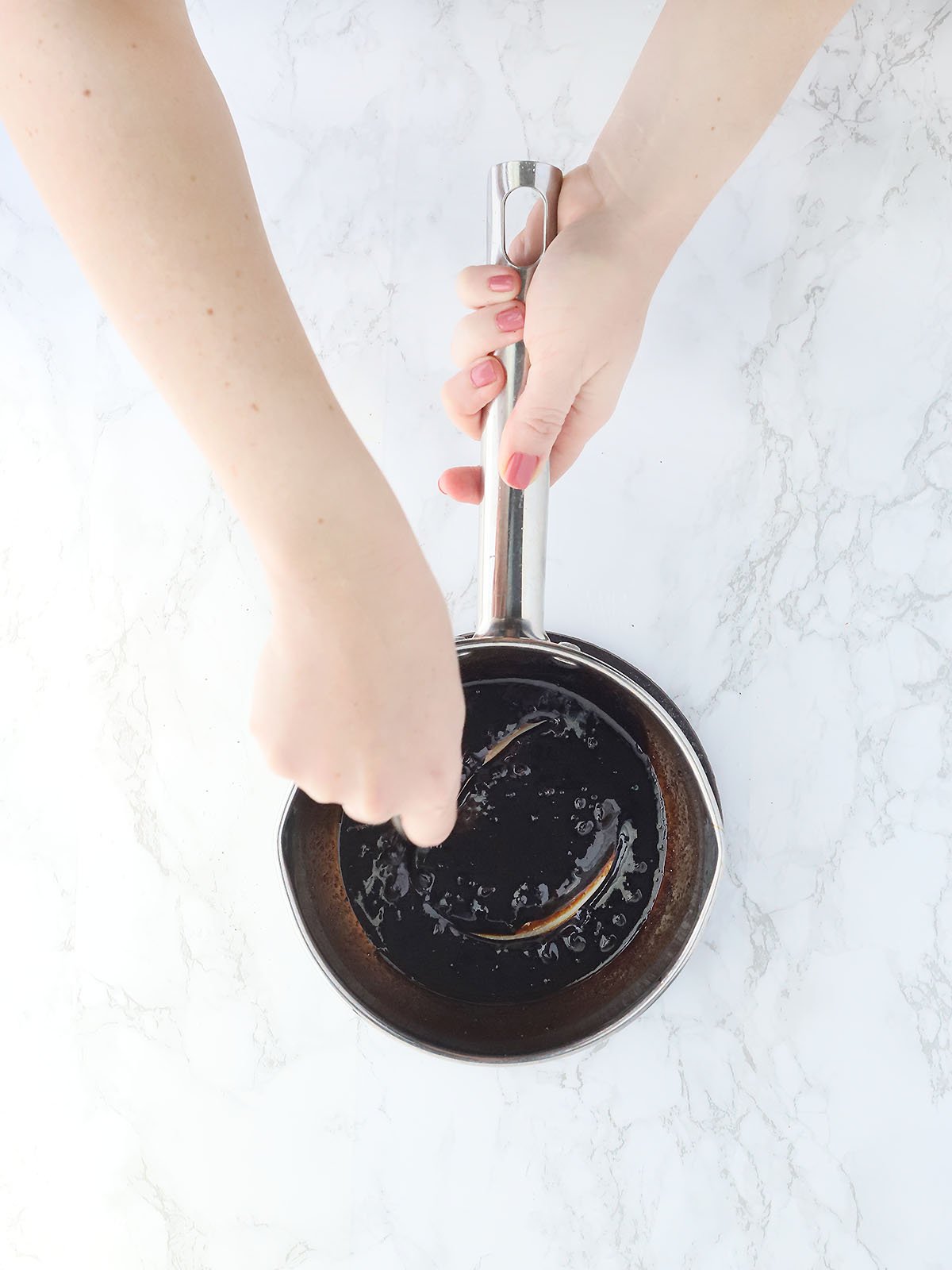

Sear the Salmon
Brush both sides of four (4-6 ounces each) salmon filets with olive oil. Season with salt and pepper. Heat the reserved bacon grease in the same cast iron skillet you used earlier over medium heat. Place the filets skin side up in the pan. Sear the filets for about three minutes.
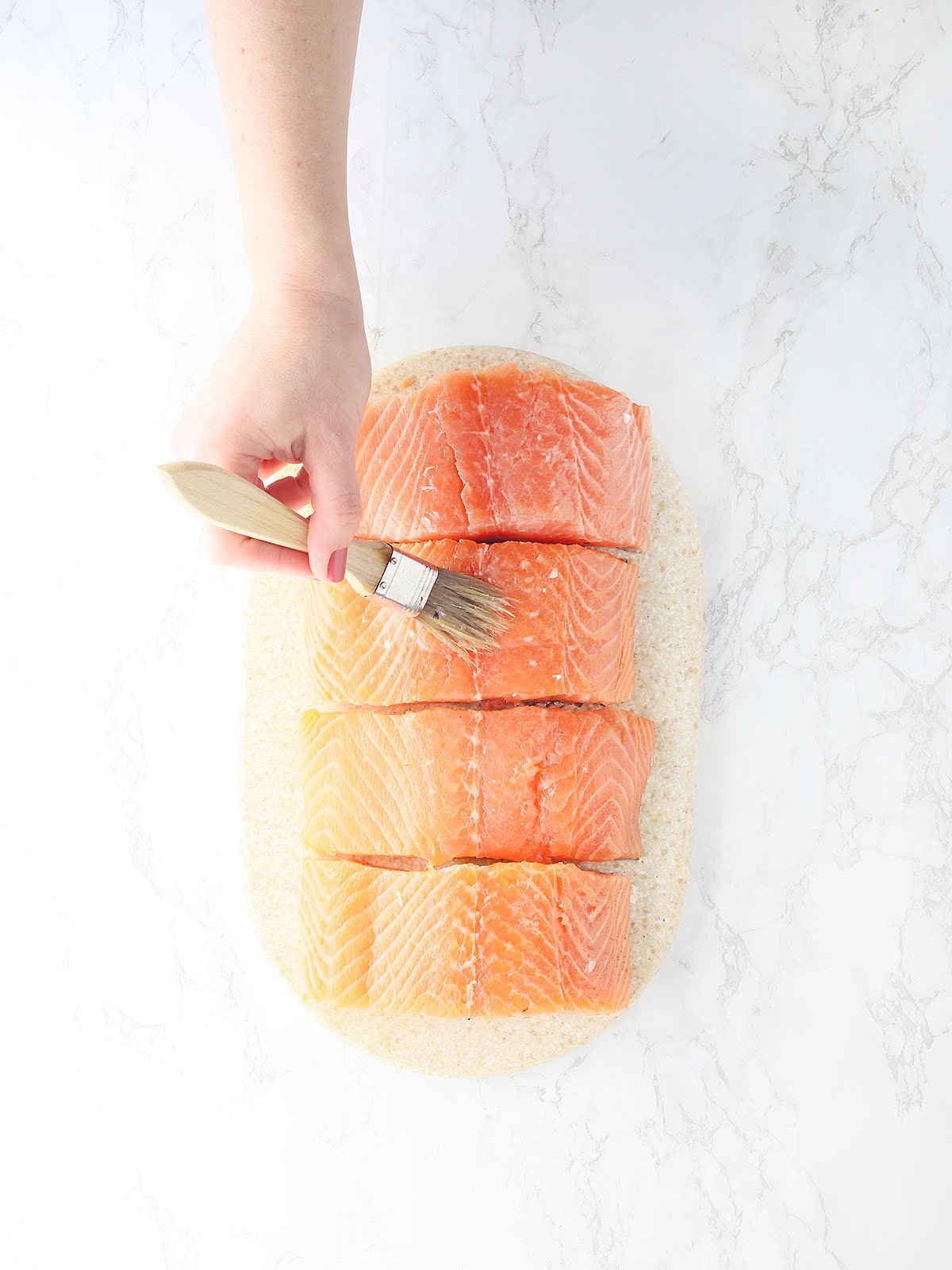
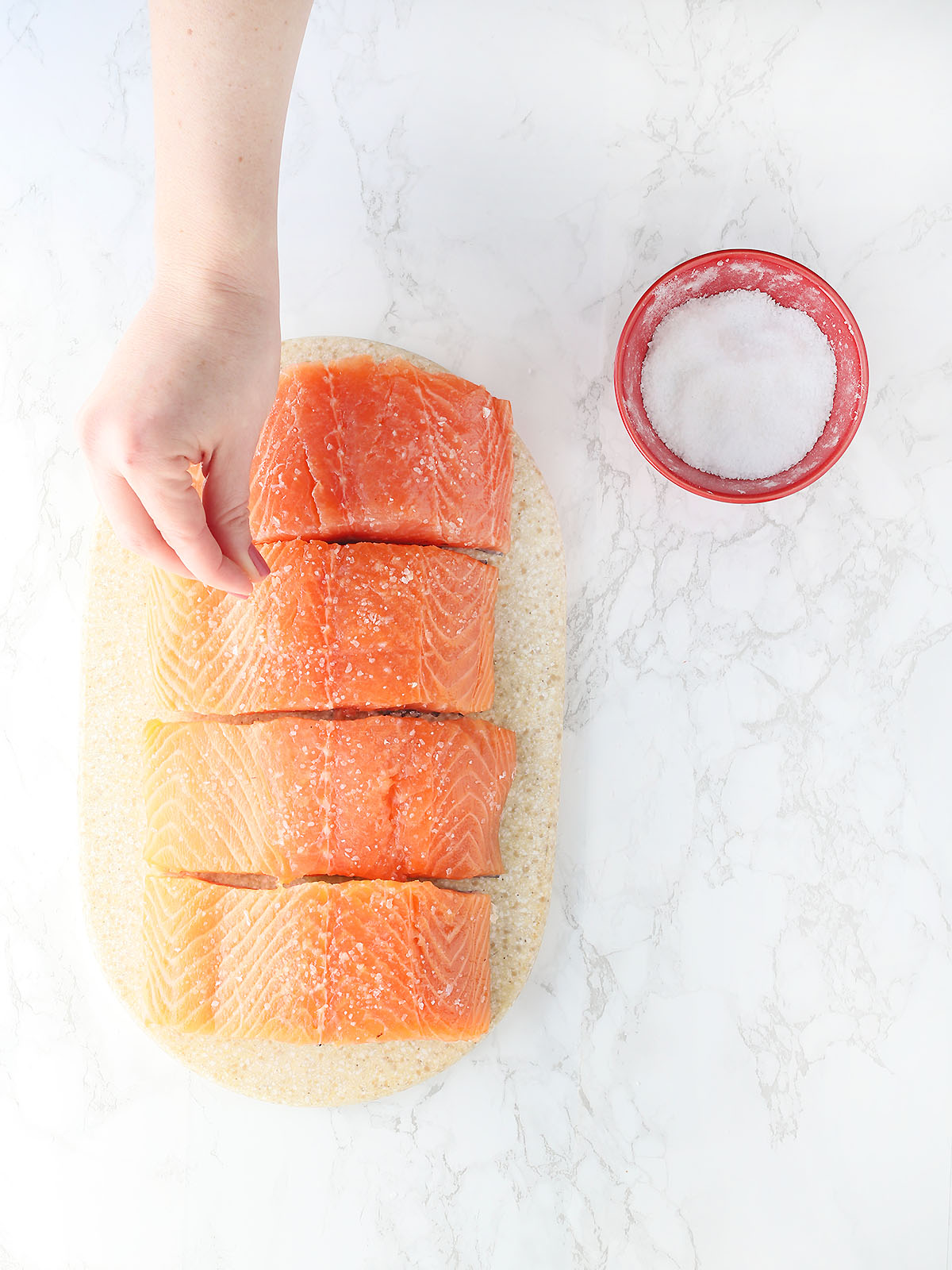


Carefully flip the filets so that the skin side is down. Brush the molasses glaze over the salmon. Continue to sear for about three minutes more or until the salmon reaches your desired doneness. How long you continue to cook the salmon will depend on the thickness of your filet.
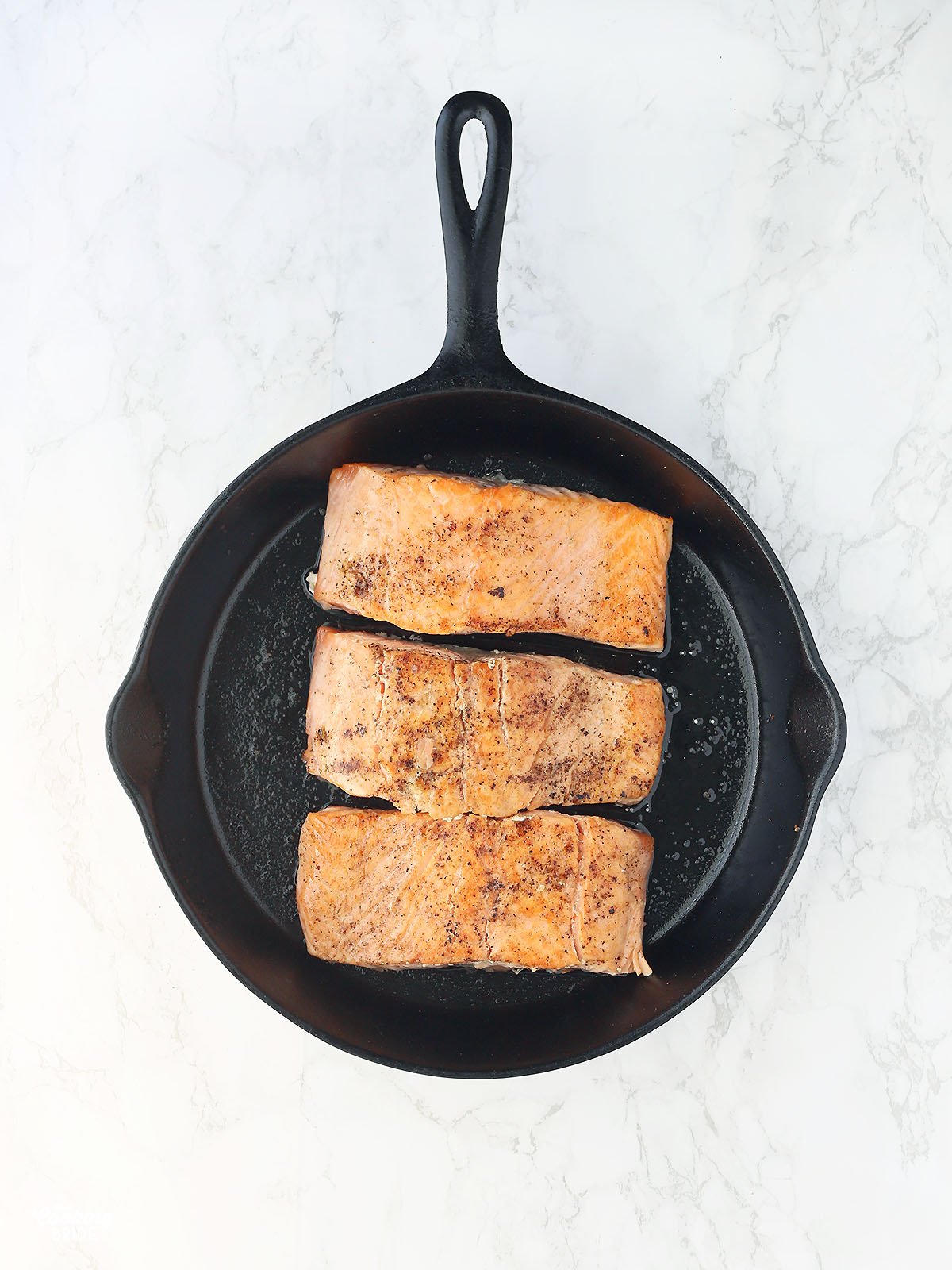

How to Tell if the Salmon is Done
There is a misconception that since salmon is fish, it should be cooked all the way through, i.e. well done. This is simply not true. A well-done salmon filet actually ends up being pretty dry.
Salmon is like steak, there are varying degrees of doneness. As long as the salmon is fresh and has been handled and stored properly, consuming a salmon filet that has been cooked to medium-rare or medium is fine. When cooking salmon, I leave the center just slightly undercooked, but not raw. The thickest part of the filet should still have some give if I press down on it with my (clean!) index finger. The outer edges will just start to flake and the center will just have started to turn from red to pink.
Storage, Reheating and Freezing
Storage: Leftover salmon filets should be stored in an airtight container in the refrigerator within two hours or cooking. It will keep for up to four days.
Reheating: Salmon can be reheated in the microwave or for 5-10 minutes in a 350-degree oven. Reheated previously cooked salmon can cause the filet to become overcooked and a little dry. If you don’t mind eating the salmon cold, I suggest cutting it up and using it as a topping for salad greens.
Freezing: Cooked salmon can be frozen and will keep up to a month in the freezer. Seal the salmon in an airtight freezer or vacuum seal bag. That in the refrigerator overnight before reheating.
What to Serve with Molasses Glazed Cast Iron Salmon
- Stir Fried Brussels Sprouts
- Sautéed Green Beans with Ginger and Caramelized Onions
- Cheese and Cauliflower Gratin
- Bacon Lettuce and Tomato Wedge Salad
- Asian Cucumber Salad
Molasses Glazed Cast Iron Salmon
Ingredients
For the molasses glaze:
- 2 slices bacon
- 2 tablespoons balsamic vinegar
- 2 tablespoons molasses
- 1 teaspoon minced garlic
- 1/8 teaspoon ground black pepper
- 1 teaspoon dried mustard
- Salt to taste
For the salmon:
- 4 salmon filets 6-7 ounces each
- 2 tablespoons olive oil
- 1 teaspoon salt
- ½ teaspoon cracked black pepper
Instructions
For the molasses glaze:
- Cook bacon in a medium cast iron skillet over medium high heat until crisp. Using a slotted spoon, remove the bacon from the pan and reserve the bacon grease. Once the bacon is cool, finely chop and set aside.
- In a small saucepan whisk together the balsamic vinegar, molasses, garlic, ground black pepper and dried mustard. Simmer over medium low heat, stirring frequently, until the glaze begins to thicken, about two minutes.
- Remove the pan from the heat and stir in the minced bacon.
For the salmon:
- Brush both sides of the the salmon filets with olive oil. Season with salt and pepper.
- Heat the reserved bacon grease in the same cast iron skillet over medium heat.
- Place the filets skin side up in the pan. Sear the filets for about three minutes. Carefully flip the filets so that the skin side is down.
- Brush the molasses glaze over the salmon. Continue to sear for about three minutes more or until the salmon reaches your desired doneness.




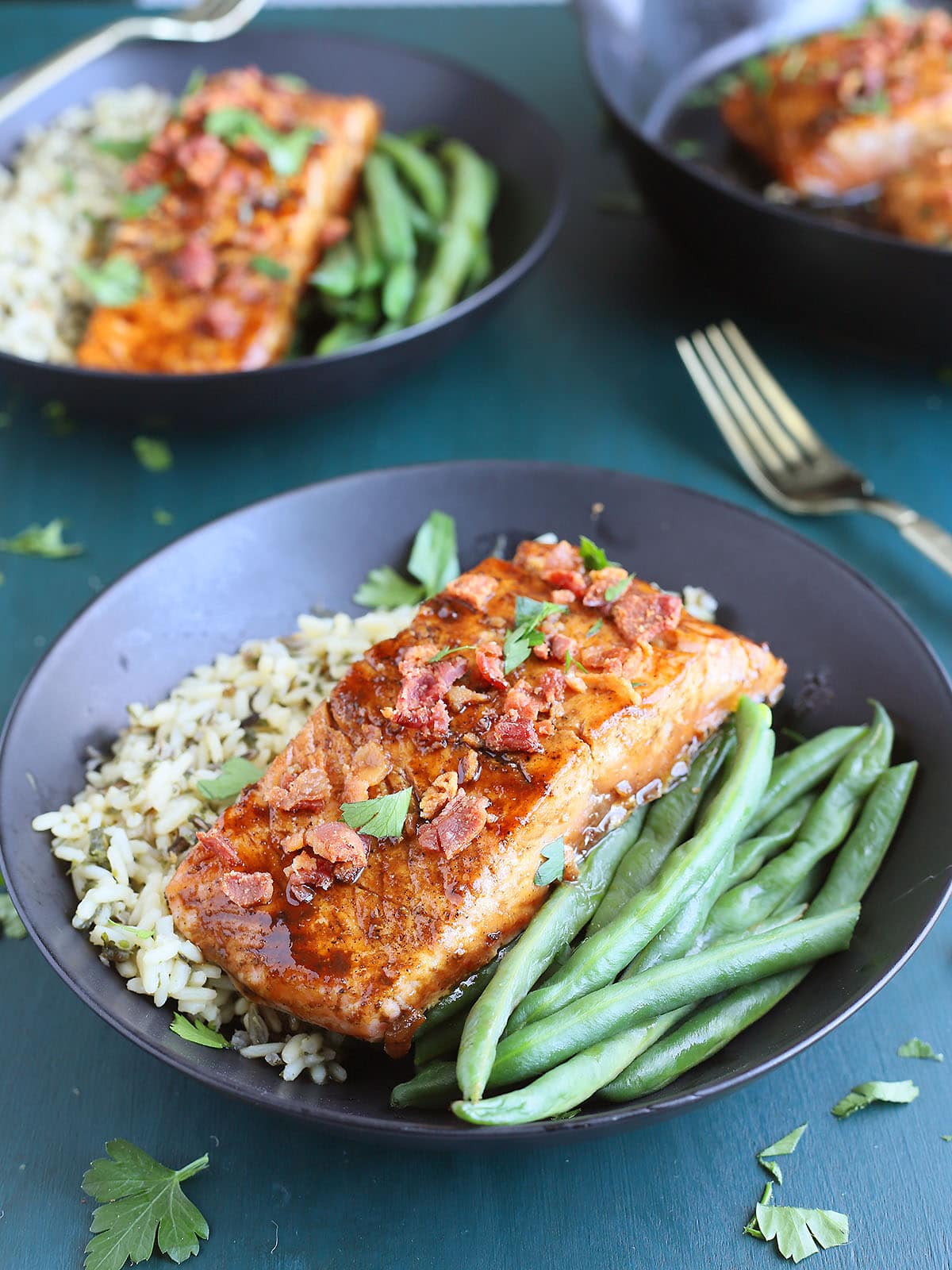
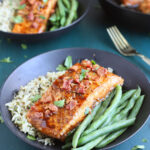
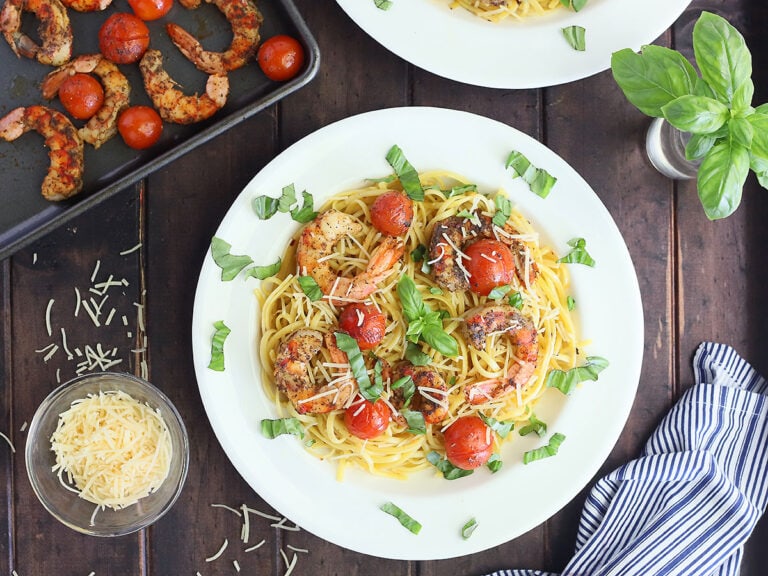





Thank you, Karl! I’m so glad you enjoyed this recipe.
This dish was great! We had green beans with blanched and slivered almonds with it I wouldn’t change anything and the family agreed!
Thanks so much. 🙂 Risotto is my most favorite dish in the world to make, so I look for any excuse to experience those sounds and smells! I’ve never done grits, so I think I will try that. (ps: your bang bang shrimp recipe is a HUGE favorite at my house…. Sriracha is a food group for me, love the sauce and use it on many other things that need a dip)
What a small world! I lived in Hattiesburg for four years before moving to Jackson – it’s a GREAT town! Hope you didn’t sustain too much damage from the tornado a few months ago.
Marlene, I used this recipe for the grits: https://cookingbride.com/main-courses/shrimp-and-grits/
A simple risotto would work really well with this. I would just season it with a little Parmesan cheese. The vinaigrette has a lot of flavor, so you wouldn’t want to the two competing.
Fabulous!!! Do you have the recipe for the cream corn grits? What type of risotto would you recommend pairing that with?
What a great experience! You need some ME time to keep you grounded and sane 🙂 I didn’t realise were neighbors, I’m in Hattiesburg. Love your website!!